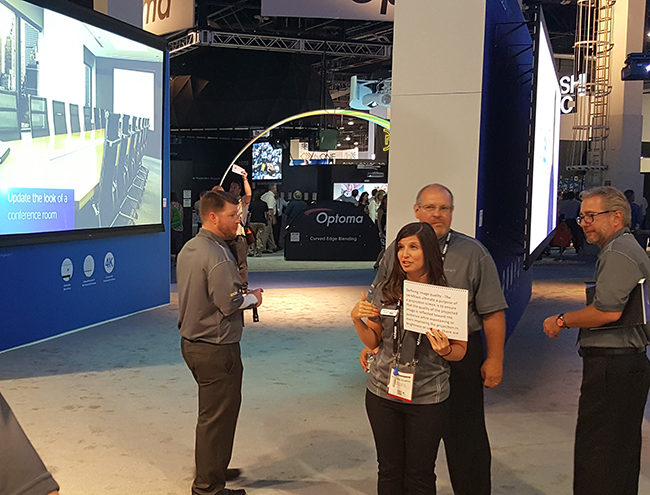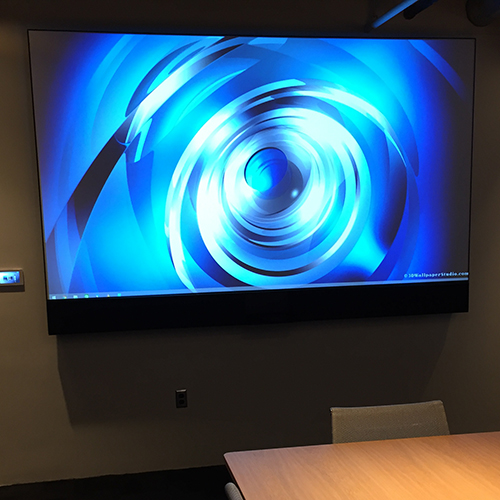Posted on 7/12/2017 by Da-Lite Team
AV has changed tremendously since Da-Lite founder Adele De Berri tested various silver paints in a Chicago church basement in her quest to find a better projection surface more than 100 years ago. Da-Lite has been changing along with the times. Many AV technologies have come and gone in that time – slide projectors, 8-track tapes, CRT televisions – but projection screens have continued to go strong.
The biggest reason for that longevity – size. There’s nothing else that can match a properly sized screen for the application. Flat panels have gotten bigger, but are no substitute for a projection screen in medium to large conference rooms. Without it, reading 10 or 12 point font is impossible. A 90” flat panel is huge as flat panels go, but if the room is larger than 15 feet, you’ll cause a lot of eye strain. That flat panel also won’t roll up out of the way when not in use.
Screen technology has come a long way from paint on a canvas. Today’s HD materials are able to reflect every pixel you paid for with that HD projector to ensure that everyone in the room is on the same page and not squinting distractedly through presentations. Each surface has its own features that improve or retain the projected image under various projection challenges. Nothing matches a projection screen for flat surfaces, large sizes and uniform light distribution.
If you want everyone in the room to see the projected information, you must use the right size screen. For example, a room that is 17’ deep needs a 100” diagonal screen. A room that is 20’ deep needs a 120” diagonal screen. A 25’ deep room needs a 150” screen. Basic AV standards recommend you take the depth of the room and divide by two to find the right diagonal for 16:10 WIDE and 16:9 HDTV aspect ratios.
Limiting factors:
- Be aware of ceiling height and its effect on your options
- The bottom of the screen in professional and educational applications should be about four feet from the floor to make sure those in the back of the room can see the whole screen
- Comfortable viewing distances begin one screen width away
Convincing customers on the math can be difficult, so we have created a sizing chart you can use to show them the difference in sizing in person.

Use this link to order your free image sizing book. It works like an eye chart with different size fonts to quickly zero in on what the specific room needs in screen size for easy reading.
Request an image sizing book from our literature page!
We’ve got more help coming on the way with an online screen selection tool coming this year, designed based on feedback from our customers. Stay tuned!

 All News
All News